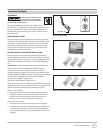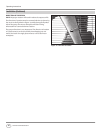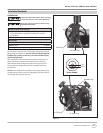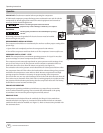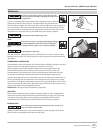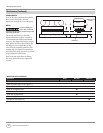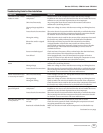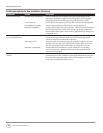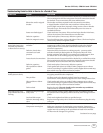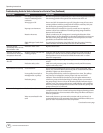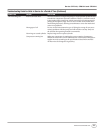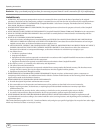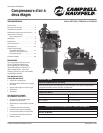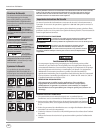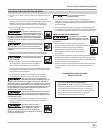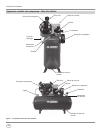
Series CE7000, CE8000 and CE9000
www.CH-Commercial.com
Troubleshooting Guide for Units in Service for a Period of Time
SYMPTOM CAUSE SOLUTION
Motor does not run Loose electrical connections The entire electrical system should be checked by a certified electrician�
The incoming wires and the compressor electrical connections should
be checked� Loose connections will cause malfunctions�
Blownfuseand/ortripped
breaker
The breaker and fuses required for this unit must be time delay�
A tripped breaker or blown fuse may result from a direct short to
ground, high current draw, improper wiring, incorrect fuse or breaker
size and/or type� This needs to be evaluated by a service center or
certified electrician�
Starter overload tripped Check and reset if necessary� If the overload trips after the initial reset,
refer to the section of the manual that covers this issue�
Defectivecapacitor Check and replace (if necessary) defective capacitor�
Defectivemagneticstarter First check for any loose wiring and tighten if loose� Check and replace
(if necessary) defective magnetic starter�
Motor hums; motor
draws high amps, trips
overload, trips breaker,
or blows fuse on start up
Defectivepressureswitch
unloader
Drainthetankofallpressure.Restartcompressorundernoload.If
compressor is able to start, then the unloader needs to be checked�
If this problem is not corrected it will fail the motor and / or other
electrical components�
Defectivecheckvalve-
constant loss of tank
pressure
Determineifthecheckvalveisworkingproperly-pressureswitch
unloader should quit hissing after the compressor shuts off� If the
hissing continues and if there is a constant loss of tank pressure, then
the check valve is not working properly� Replace check valve�
Loose electrical connections The entire electrical system should be checked by a certified electrician�
The incoming wires and the compressor electrical connections should
be checked� Loose connections will cause malfunctions�
Defectivecapacitor Check and replace (if necessary) defective capacitor�
Valveproblemorblown
gasket
Check gasket and replace as needed� Other symptoms occur when a
valve is not sealing or a gasket is blown such as higher than normal amp
draw which may trip out the overload or breaker�
Compressor runs but
builds pressure slowly
Air leak Check the entire system for leaks, including the compressor unit and
any piping attached to the compressor
Dirtyairfilter Air filters need to be changed regularly based on usage and
environment� A dirty filter may appear to be clean� Change filters often�
Valveproblemorblown
gasket
Check gasket and replace as needed� Other symptoms occur when a
valve is not sealing or a gasket is blown such as higher than normal amp
draw which may trip out the overload or breaker�
Tank cracked Replace the tank� The unit should not be run under any conditions.
Tanks cannot be welded or patched�
Interstage safety valve
pops off when the unit is
running
Malfunctioning interstage
safety valve
Valveproblemorblowngasket.Highpressureairbackflowsintothe
low pressure side of the pump� This is caused by valve leakage or blown
gasket�
Low head bolt torque Check and retighten head bolts to specified torque�
Defectiveinterstagesafety
valve
Replace interstage safety valve� Under no circumstances plug the safety
valve port
Oil out breather
Worn rings or scored cylinder Replace rings and/or replace cylinder�
Compressor running hot Make sure compressor is running the correct rotation� Compressor
should be clean and in a well ventilated area� Oil should be changed on
regular intervals according to the specifications listed in the manual�
Air filter must be changed as it gets dirty�
Continued on next page
17



